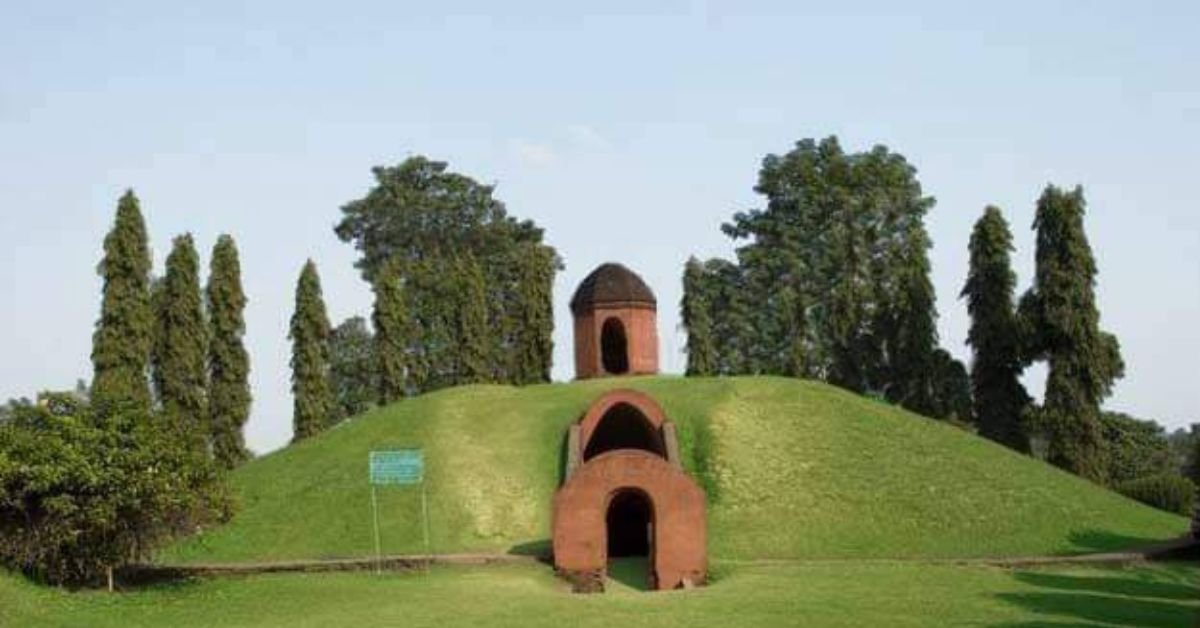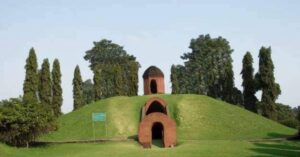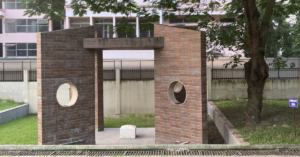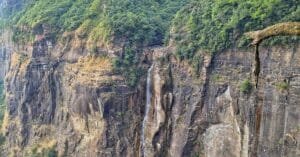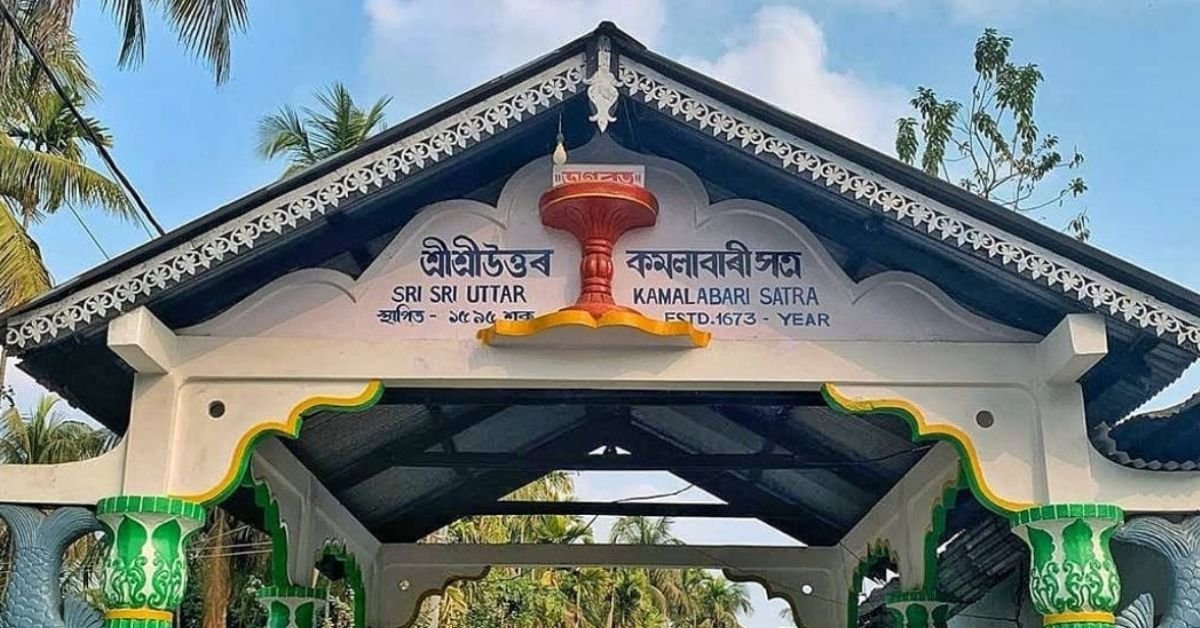Maidams of Ahom Kings in and around Charaideo Heritage Site are known as “The Pyramids of Assam”. Both of the pyramids of Egypt and the Maidams of Ahom Kings in Assam were constructed for the same purpose – burying the bodies of the departed kings and the belief regarding the custom behind those was also the same – the departed kings would become alive and live a royal life in the other world. The art and sculpture on the bodies of both of the monuments were wonderful and noteworthy, but unfortunately the maidams have not got importance as world heritage comparing to pyramids which have been recognized as site of world heritage.
The word “Maidam” is a Tai word which means tomb in English. It is the sacred burial ground of Ahom Kings (Swargadeo) and queens. Maidams are hemispherical in structure comprising a massive underground vault with one or more chambers having domical superstructure and covered by a heap of earthen mound. Though these are quite different in appearance from the pyramids of Egypt, the purpose of building these tombs is the same.
Location of Maidams
Though the maidams are scattered all around Sibsagar, Jorhat and Dibrugarh towns of upper Assam, most of the maidams of powerful kings of Ahom kingdom were found in and around the hillock of charaideo, a district town of Present day Assam. The name “Charaideo‟ comes from the Tai word – “Che Tam Doi” „Che‟ means town, “Tam” means foot hill and “Doi” means hill or mountain. So, the word “Charaideo” means “town in the foot hill” Charaideo was the first capital of Ahom Kingdom established by the first Ahom Swargadeo Chao-Lung-Siu-ka-pha in 1228 A.D. The town is located 30 K.M. away to the east of Sibsagar town in upper Assam in the Sibsagar – Sonari road. It is located at the foot hills of Nagaland. Though the capital of Ahom Kingdom moved many times, Charaideo remained the symbolic centre. It is also believed to be the place of ancestoral Gods of the Ahoms. Charaideo is also known as “Jerusalem of the East” for the location of maidams of the Ahom Kings, queens and the nobles.
When comparing Maidams and pyramids, it’s evident that their architectural styles are distinct. However, the underlying ritual beliefs and customs associated with both share common elements.
The Ahoms held the belief that the spirits of their departed kings would return to the earthly realm and lead a regal existence within the Maidams. Consequently, they placed all the necessities required by the king, including the deceased monarch’s body, inside these structures. In some instances, ten to twelve living individuals were also interred within the Maidam to attend to and serve the king.
In contrast, Egyptian tradition posited that the soul comprised nine facets, one of which was the “ba,” symbolized by a bird-shaped image often found on tombs. The “ba” had the ability to fly from Earth to the heavens and required a recognizable landmark on Earth, typically the pyramid. Once the “ba” observed its owner’s resting place from above, it could descend and reunite with its owner. Monuments like the Statue of Djoser at the Step-Pyramid complex likely served this purpose and served as a reminder of the great king’s legacy. Similarly, atop the soil mound of the Maidams, a small open pavilion known as “Chow-Chali” was provided for the departed kings’ souls to recognize their final abode.
Comparison between Maidams and pyramids
Both Maidams and pyramids incorporate underground chambers or vaults for various purposes. One chamber in both structures was designated for housing the departed king’s body along with the necessary items for a royal afterlife, while other chambers were intended for servants and caretakers.
In terms of architectural design, Maidams feature hemispherical mounds resting on octagonal bases, with the entrances to the vaults situated on the west side of the structures. Pyramids, on the other hand, have a prismatic shape with quadrilateral bases that rise to a pointed triangular apex.
Although Maidams are not as towering as pyramids, their original heights have diminished over time due to natural disasters, especially earthquakes and erosion. Had their original heights remained unchanged, these Maidams could have also achieved the status of “wonders of the world,” similar to the Egyptian pyramids.
If you want to read more about Maidams of Charaideo, click here.

